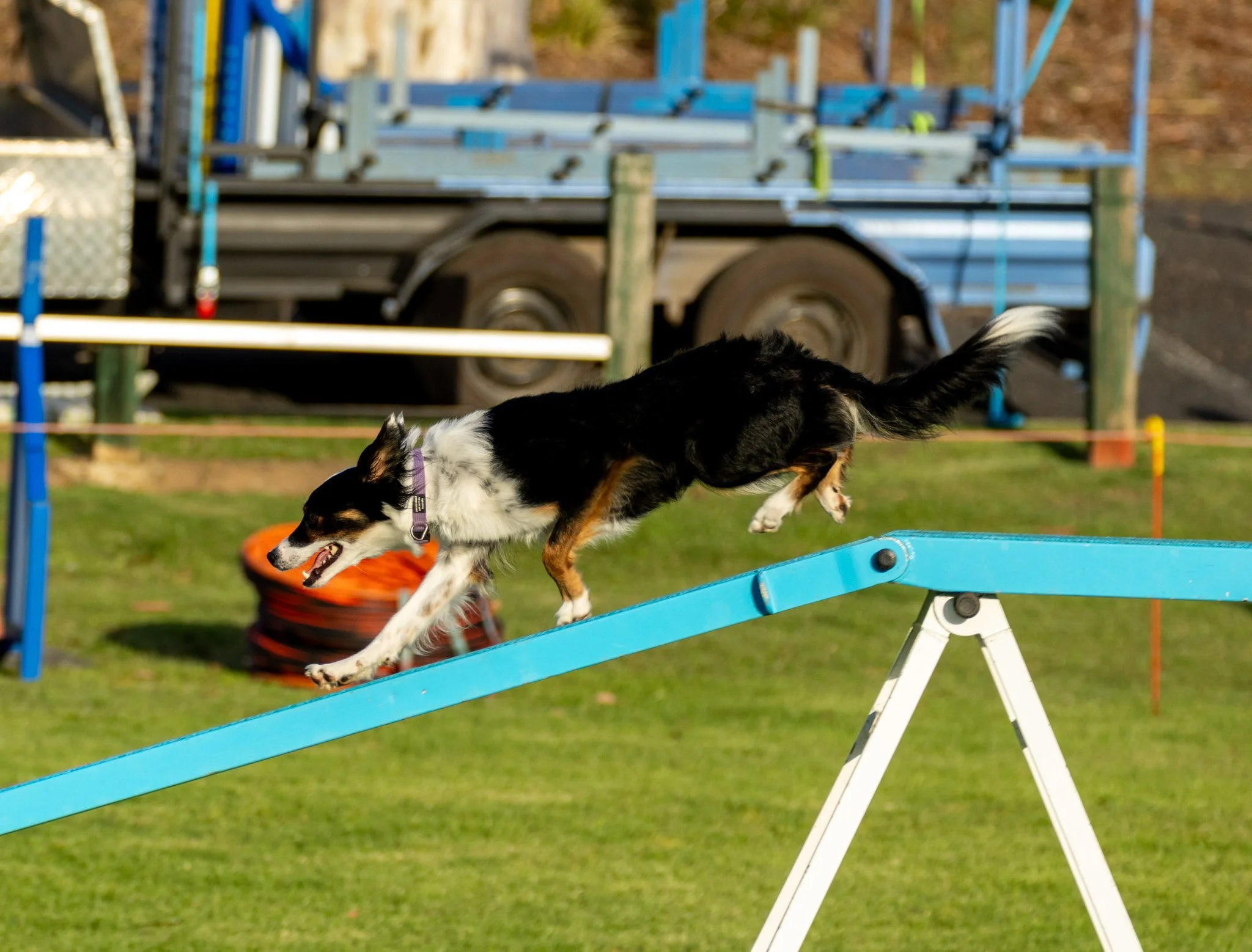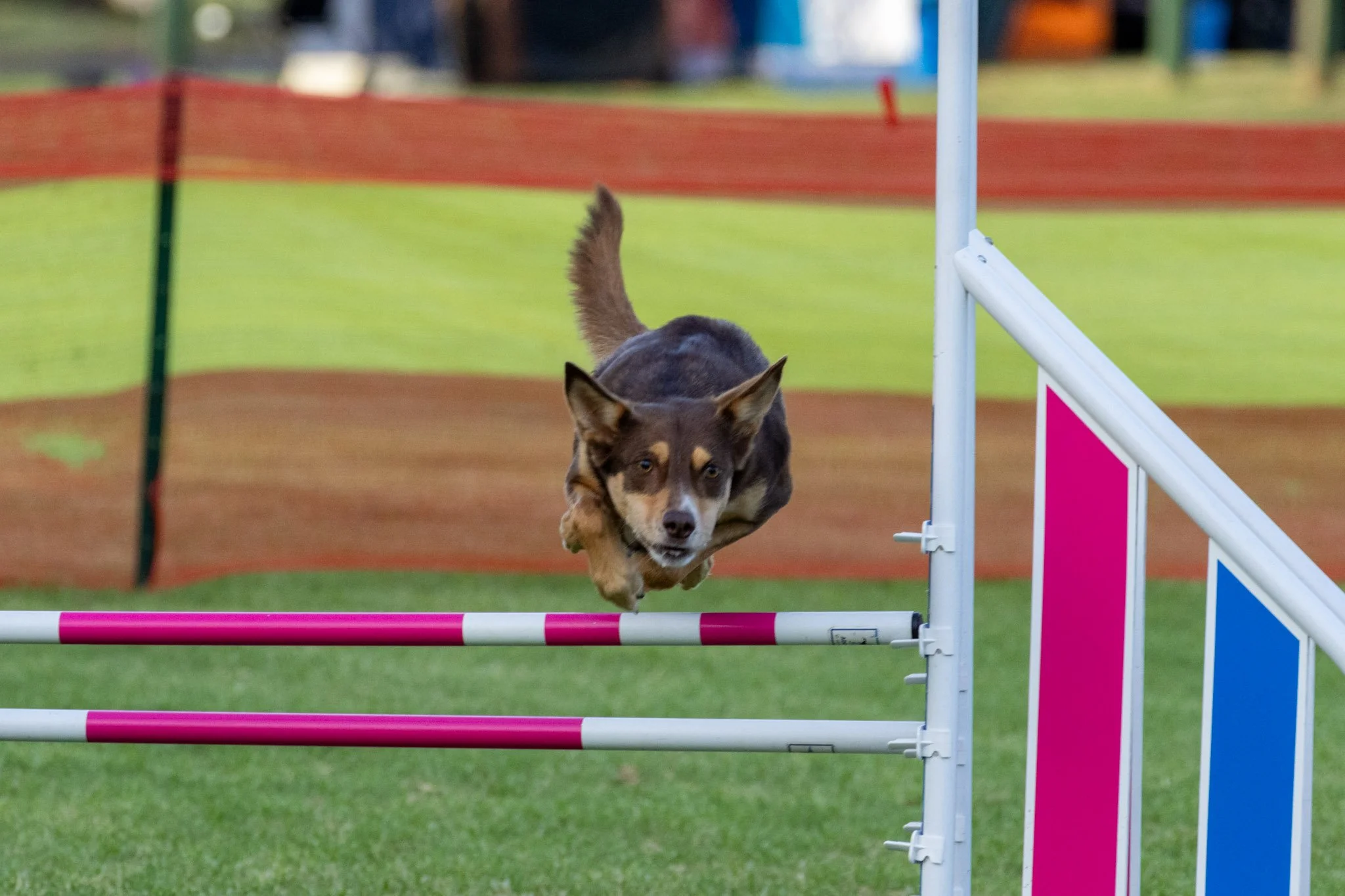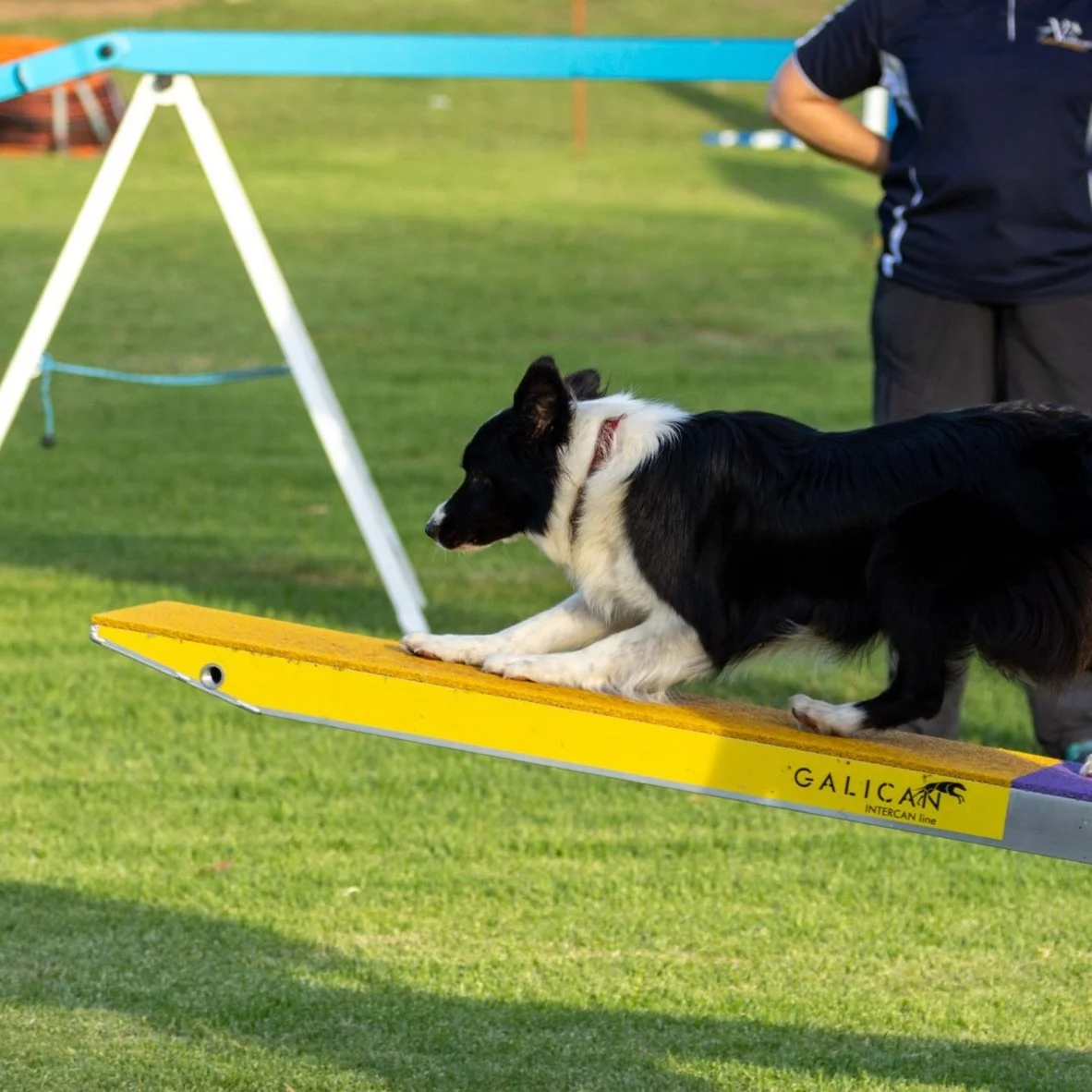
A sport for all dogs
Canine Agility is a sport where a handler (that’s you!) directs a dog around an obstacle course as fast and as accurately as possible.
Can my dog do agility?
If your dog is healthy and fully grown, they can do agility! Don’t be concerned that your dog is not a traditional agility breed - dogs of all shapes and sizes can successfully participate in the sport.
I have a puppy, when can we start?
Starting agility too young can damage a puppy’s body, particularly during exercises like hurdles and weaving. Puppies also struggle to stay focused in distracting environments and during longer training sessions. For now, focus on foundational skills and basic obedience training.
A dog can starting agility training when it is fully grown and its growth plates have closed, which varies greatly between breeds, but usually happens between 12 and 18 months of age.
My dog has health issues, can we still participate?
It depends. Like all sports, agility is physically demanding, and can exacerbate some health conditions. Agility can also keep your dog fit and healthy in both mind and body, and can be a good break from your dog’s usual routine, particularly if they do a lot of repetitive exercises like fetch.
If you are unsure, it is best to consult your vet before starting. We can often accomodate dogs by lowering the jump heights or contacts if required.
What does my dog need to start?
Your dog does not have to be perfect, but a good training foundation will ensure success. Your dog should come to you when called and know basic commands like sit, stay, and leave it. They should be able to ignore mild distractions such as other dogs nearby and focus on you. If you want to build a training foundation, consider joining the Eastern Suburbs Dog Training Club.
Do I need to be fit?
You don’t need any particular level of fitness to start - handlers can even successfully participate while using a wheelchair or other mobility aid.
That said, agility is a team sport - the dog doesn’t know the course in advance, so they rely on you to guide them around the course in the correct order, which means you can only go as fast as the slowest team member. If you want to compete in the future, fitness definitely helps!
Do we need to compete?
No! All of us do agility for fun, first and foremost. Although many club members do also compete in competitions, we welcome members who just want to bond with their dog and have no interest in competing.
If you are thinking about competing, the club can guide you towards that goal and support you when you’re ready to give it a try.
My dog has behavioural issues, can we still participate?
Safety is our number one concern. Since behavioural issues are unique to each dog, we require all new dogs to undergo a short temperament check at the start of their first session. We will try to accomodate your dog as much as possible, including by modifying training if needed. Your dog can wear a yellow collar to signal that they need extra space, and we can ensure other dogs are not off leash near your dog while training. If we cannot accomodate your dog, we may be able to recommend other training opportunities.
Agility training can provide dogs with the mental stimulation they need for a happy and healthy life, improve communication between dog and handler, and help the dog find confidence and enjoyment. For dogs with a working pedigree in particular, agility can provide a welcome outlet for their need to ‘work’.
Many behavioural issues stem from a lack of mental stimulation, and even if your dog receives plenty of physical exercise, working their brain and body can often help to address common behavioural issues.
Can we come and watch?
Of course! You are welcome to come and watch our training sessions, but please keep your dog on leash and well clear of the obstacles until you have signed up for a program.
Hurdles
The quintessential agility obstacle, just a bar to jump over. Don’t be fooled though, there’s a lot more to it - from backside sends to the serpentine, navigating the hurdles correctly can be trickier than it looks.
Tunnels
Tunnels can be scary for dogs who are just starting out, but they quickly become the favourite obstacle for most dogs. Soon enough you’ll learn the meaning of the term “tunnel suck”.
Broad Jump
Jumping isn’t all about height - the broad jump will test your dog’s ability to jump long.
Dog Walk
Time to walk the plank! The rules for the dog walk are similar to the scramble - up one side, and down the other, touching the yellow contact zone on the way down.
Weave Poles
Also known as the ‘slalom’, this obstacle is a deceptively difficult one to master. The dog must always enter with the first pole on its left, and then weave through a total of 12 poles.
Spread Hurdle
Don’t tell the dogs, but it’s just two hurdles close together.
Seesaw
Also known as the ‘teeter’, this obstacle is often the most intimidating for both dogs and handlers. Fear not - it’s an advanced obstacle not used in novice trials, so you have plenty of time to master it.
Hoop
Is it a round hurdle, or a really short tunnel? You decide!
Scramble
Also known as the ‘A-Frame’, this is the first of the ‘contact’ obstacles. The key is the yellow section - the dog must touch the yellow contact zone at the bottom of the jump before reaching the ground.








